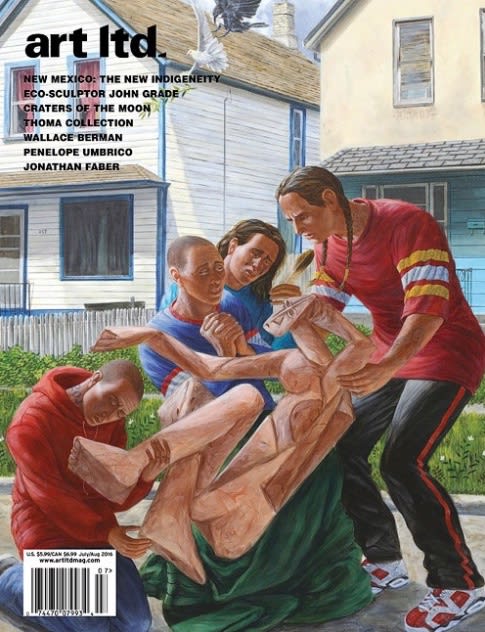“Travel should be an art through which our restlessness finds expression,” wrote Ilan Stavans and Joshua Ellison in a New York Times article, “Reclaiming Travel” in 2012. For artist Paul Wackers, recent years of travel have provided a way for him to revisit his art practice with fresh eyes and begin to incorporate new subjects into his already complex still-life paintings. After spending several years in the SF Bay Area where he received his MFA at the San Francisco Art Institute, Wackers recently relocated to Brooklyn and for the last few years he has been attending residencies in Brussels and Norway and personal travel stints to Morocco. His current solo exhibition occupies two large gallery spaces at Minnesota Street Project in San Francisco, hosted by Eleanor Harwood Gallery. The impressive installation included several large-scale paintings alongside sculptural shelves and stands that showcase dozens of ceramic sculpture. Featuring recent and new works, the viewer is clued into his progression from paintings of predominantly interior scenes, to more open tableaux that incorporate landscape and exterior views.
For example, Moroccan Wall (Ourika Valley) (2016) features thick impasto sections of tonal grey that simulates cascading rocks, while a thorny cactus and palmy fronds mimic the arid landscape’s greenery, over which Wackers has inserted a minimal abstract structure and expressionistic spray-painted gestures. In general, Wackers’ paintings offer a definitive nod toward European modernist forebears, particularly Matisse, for his unapologetic use of color and romantic attention to plants and fabrics. There are also references to early cubist still lives and techniques, such as Picasso’s flattening of the picture plain, quirky distortion of shapes, distinct line work, and ceramics. In 2013, Wackers began working in ceramics, crafting pieces which he views as three-dimensional representations of the objects commonly found in his paintings. Each sculpture has its own personality, incorporating a variety of shapes ranging from extruded thick strands in piles to rough-hewn planks squeezed together, off-kilter amphora vases or mushy hand-size forms that simulate rocks or geodes. His dedication to texture pervades the compositions and the sculpture; his signature surface is a smear of expressionistic paint using hard-edge techniques of masking areas to build thick reliefs into geometric shapes, or recognizable referents such as leaves, pots, boulders or textiles. Wackers successfully solidifies the notion that an artist need not be defined by his or her medium, but rather by a shared expression of experiences.


